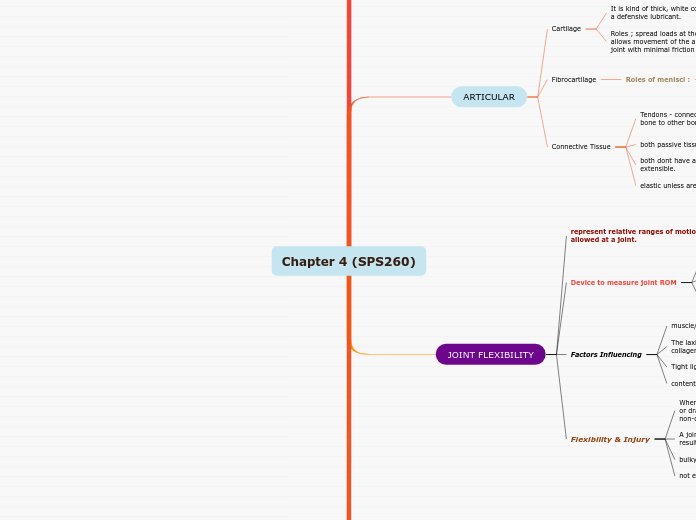によって NUR IZZAH ATIRAH BINTI KAMIL 4年前.
312
Chapter 4 (SPS260)

によって NUR IZZAH ATIRAH BINTI KAMIL 4年前.
312

もっと見る

To name your story, you have to think about the overall message and what you want your audience to understand from the story. Also, make it relevant and easy to remember.
The ending of a story is essential. We all know that if the ending is weak, what happened before loses its importance. So make it unpredictable, but fair. A resolved ending answers all the questions and ties up any loose threads from the plot.
Anemia, fatigue, muscular atrophy, osteoporosis & other systemic changes
Inflammation & thickening the synovial membranes & breakdown of the articular cartilage.
This is the closure section of the story.
See examples of possible outcomes below:
Try answering these questions to come up with a closure:
- Have all the problems been solved?
- Is there a clear picture of what happens with each character in the story?
- Has the challenge transformed your main character?
- How do the characters feel in the end?
This is the moment when the main character surpasses the last obstacle and finally faces their greatest challenge.
The climax usually follows one of these patterns:
Type in your answer.
Symptoms: visible deformity, pain swelling and usually some loss of joint movement capability
Symptoms ; pain & swelling
Secondary characters might also have motives that lead them to cross paths with the main character or which might trigger them to help the main character.
The middle of the story is where you add layers of complications that will lead to the end. Reveal more about the character's journey. Did their personality go through changes? How did they overcome the challenges? And as you build up the story’s central conflict, make it more personal to that character. Also, from the middle act, you have to lead into the final act.
There wouldn't be any tension and excitement in your story if there weren't any obstacles in your character's way.
Subtopic
A story is nothing more than a character overcoming a series of difficulties to reach the desired goal. Obstacles usually create suspense and conflict. In overcoming obstacles, there is growth: weak becomes strong; hatred turns into love; sadness into happiness; wrong into right; lies into truth; or evil becomes good.
See a few examples below:
Obstacles
Your character(s) need(s) motivation in order to solve the challenge(s).
Why does your character need to confront this challenge? What does he/she expect to accomplish by solving it?
See a few examples:
distribute of loads over the joint surfaces. - improvement of the fit of the articulating surfaces. - limitation of translation or slip of one bone w respect to another.
Each story has a main character and that character usually needs to solve a problem or challenge. The character's challenge is the one that creates tension throughout the story.
Type in any other challenges which other characters in the story need to face.
Other challenges
In most stories, there are 3 challenges. The number 3 is a mystical number symbolizing completeness. Try to come up with interesting challenges with which your character needs to struggle.
See a few examples below:
Challenges
In the beginning of the story (or the exposition), you will need to introduce the setting and characters. You might also want to introduce the main conflict. This part of the story is important because it gives the reader necessary background information and maybe even a first insight into a character’s personality.
Ball & Socket (spheroidal ) - the surfaces of the articulating bones are reciprocall convex & concave.
ex ; hips & shoulder joints.
Saddle (sellar) - articulating bone surfaces are both shaped like the seat of riding saddle in these joints
ex ; carpometacarpal joint of the thumb
Condyloid ( avoid; ellipsoidal) - The top of the articulating bone has an ovular convex appearance.
eg ; 5th metacarpophalangeal joints
Pivot (screw, trachold) - rotation permitted around one axis .
eg ; atlantoaxial joint
Hinge (ginglymus) - solid collateral ligaments limit mobility to a planar, hinge-like movement
eg ; ulnohumeral & interphalangeal joints)
Gliding (plane, arthrodial) - almost flat & the only movement permitted is non - axial guiding.
eg ; intermetatarsal, intercarpal & intertarsal joints
The setting (time & place) of a story can change throughout the plot.
The time of the story can also change. It can describe the event of a single day or can include an entire year's plot. Anyway, don't forget to mention it.
thin plates of hyaline cartilage seperate a disc of fibrocartilage from the bones
ex ; vertebral joints, pubic
Your story can take place wherever your imagination will take you to.
For example: in an elevator, in an enchanted forest, etc. Don't forget to give details of the environment each time the setting changes, otherwise, the story can be confusing. Also, mention the seasons as each of them has unique weather and events.
applied force & allow more motion of the adjoining bones than the synarthrodial joint (- held together by a thin layer of hyaline cartilage.
ex ; strenocostal joint
Characters are essential to a good story. Usually, the protagonist(s) is/are the most affected by the plot. Introduce a character by focusing on their actions, interests, and occupation, as the physical appearance doesn't make a difference in most cases.
Type in the name of your character.
Syndesmoses
What is your character's main goal?
the bones r held together by thick fibrous tissue, which allow for every little mobility.
Which traits best describe the character's personality? Choose more if necessary:
ex ; mid - tibiofibular , inferior tibiofibular joints.
Sutures
Choose the type of your chacter:
articulating bone sheets with irregular grooves mate together and firmly bound by fibres
ex ; sutures of the skull